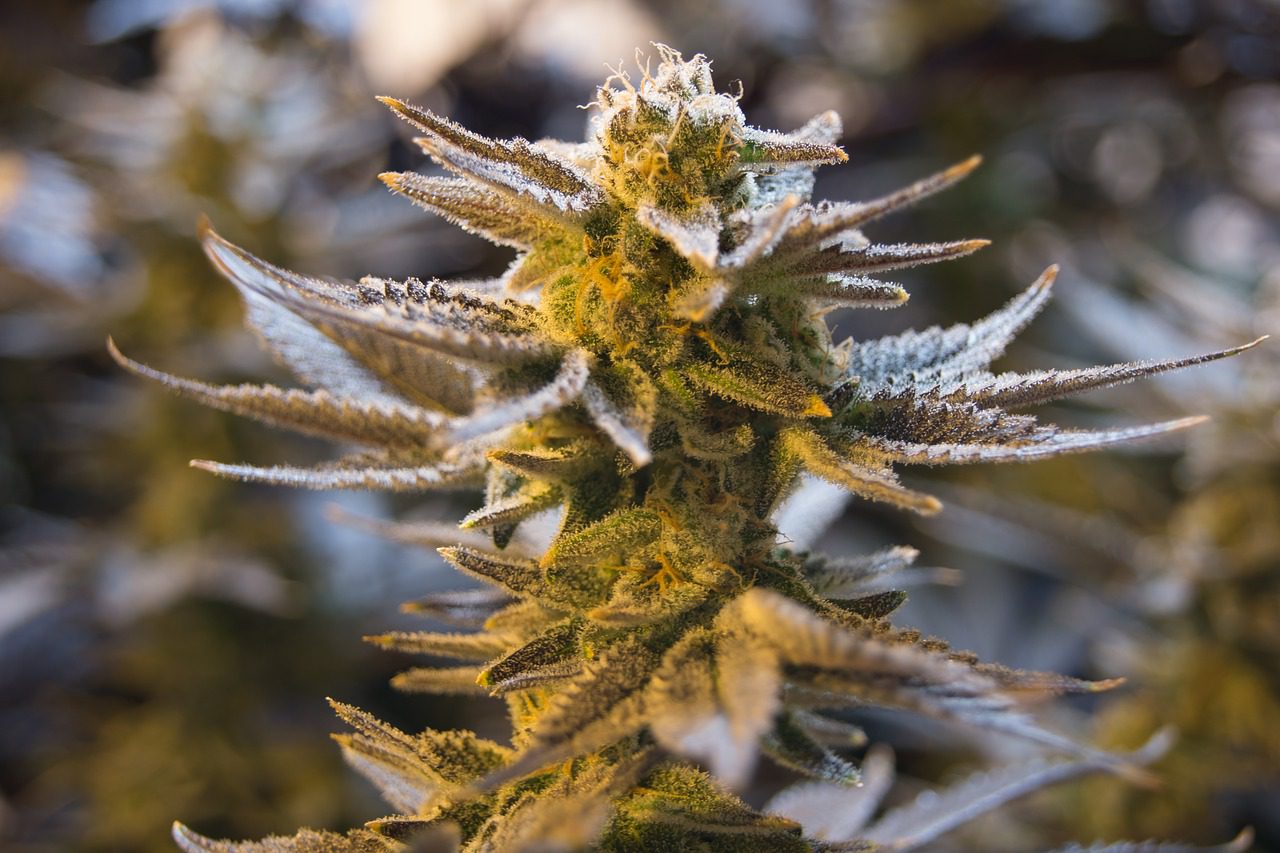
How to Spot and Avoid Marijuana Mold
Mold doesn’t just grow in basements. It grows on porous surfaces, on foods, and even on marijuana. If you do find traces of mold on your medical cannabis, the problem is more than just a nuisance. It can be a major health hazard. The key is understanding how to detect it and how to prevent it from occurring in the first place.
How to Spot Marijuana Mold
There are several types of mold that grow on cannabis flower, the two most common of which are powdery mildew and grey mold (botrytis).
Powdery mildew is the most obvious type of marijuana mold that can be spotted from a distance. It’s usually white and fuzzy, resembling a fine white powder or a thick spider web.
Grey mold may require a closer examination to properly identify. That’s because the mold often lives deep inside the cola (the central flower cluster). If you notice dying leaves or a cola that has gone soft, you may have grey mold. To find out for sure, pull the buds apart and examine the cola. If it has taken on a dull gray color and developed a faint, cotton-like growth, you likely have grey mold.
Other telltale signs of moldy marijuana include:
- Discolored roots
- Dark spots or splotches
- Wilting leaves
Granted, it’s not always easy to identify mold on marijuana. The trichomes—those cannabinoid-rich fibers that grow on the plant—can themselves have a fuzzy, powder-like consistency, and they’re often mistaken for mold. If you’re not sure, grab a magnifying glass. Trichomes will have a crystalline or milky white appearance and mushroom-like tips. Mold, on the other hand, just looks fuzzy and dirty under a microscope.
The other way to know for sure is to smell it. Mold spores emit volatile organic compounds (VOCs), characterized by a musty, unpleasant scent. If you’ve ever smelled a wet basement or water-damaged books, you already know what these VOCs smell like. In some cases, the aroma may resemble urine or sweat. If it’s moldy, get rid of it right away.
How to Prevent Marijuana Mold
Mold can grow on cannabis during the harvesting phase or as the plant ages. Persistent moisture is all that’s needed for the mold spores to germinate on the plant. So if moist marijuana is plastic-wrapped after being harvested, this can create a moisture-lock situation where the water is incapable of evaporating and serves as a breeding ground for mold. That’s why you always want to inspect your marijuana closely when purchasing. The problem often starts with the cultivator.
Likewise, if cannabis is stored out in the open in a humid environment (where humidity exceeds 65%), the persistent moisture will allow mold to thrive. If you want to keep your medical marijuana mold-free, it’s important to control your moisture, humidity, and airflow.
If you’re growing cannabis at home: Continue to follow best practices for each stage of growth, maintaining the optimal temperatures and humidity levels. This means that, at times, your humidity may exceed 70%, especially during the vegetative stage. That’s okay. The important thing is that you properly dry and cure your buds before harvesting them. Regular pruning is also important, as this will allow for optimal airflow and prevent moisture from accumulating. Always space your plants apart from one another, and maintain the proper watering and feeding regimen.
If you’re purchasing your cannabis from a dispensary: Your medical marijuana should last up to a year if stored and cared for properly. Always store your product in a dry, dark environment with limited air exposure. The relative humidity should be below 65%, and the optimal temperature is just below room temperature (around 70 degrees Fahrenheit). Some people choose to store their product in a closet or drawer. For best results, consider an airtight container designed for cannabis.
Apply for a Medical Marijuana Card Online Today
Join over 100,000 patients who have chosen Green Health Docs as their medical cannabis doctors. We have a 99% approval rate and offer a 100% money back guarantee!
Can You Remove Mold Contamination From Marijuana?
Unfortunately, once cannabis becomes infested with mold, it needs to be thrown out. There are a number of online videos and DIY tutorials suggesting that you can kill marijuana mold by exposing it to excessive heat and even combusting the cannabis, but these guides are flawed.
While it’s true that high temperatures in the 140-to-160-degree range can deactivate mold spores, the spores don’t actually die. They just become dormant. If they’re re-exposed to the optimal temperature and moisture conditions (whether on the surface of cannabis or even inside the body), they can germinate once again.
Why Marijuana Mold is Bad News
Marijuana mold can be deadly for anyone with a severe respiratory condition or a compromised immune system. This is a real concern for many medical marijuana patients, and it shouldn’t be taken lightly. But even if you’re relatively healthy, you may still experience painful symptoms or side effects. Possible reactions include:
- Upper-respiratory-tract symptoms (coughing, wheezing, asthma-related symptoms)
- Stuffy nose
- Red or itchy eyes
- Severe allergic reactions
- Fever
- Shortness of breath
- Memory loss
- Lethargy
If you accidentally ingest a bit of marijuana mold, any symptoms you experience should be temporary. However, it’s important to avoid repeated ingestion. Research has shown that long-term exposure to mold from marijuana can lead to serious lung disorders over time.
In addition, mold is bad for the cannabis itself. It degrades the terpenes and cannabinoids, leaving you with a less potent product. It can kill the buds and cause the plant to decay long before its time. And, of course, it just tastes terrible.
Your best course of action is to keep your cannabis dry and toss out anything that shows signs of mold growth. The last thing you want is for your medicine to become your ailment.
